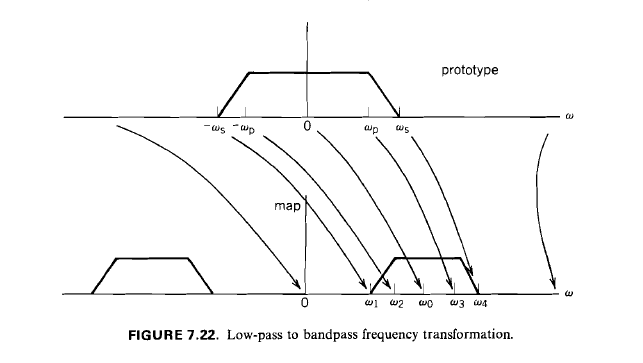I have a basic question.
The "well known" lowpass to bandpass transformation is $$ s \longmapsto \frac{\bar{s}^2 + \omega_1\omega_2}{\bar{s}(\omega_1 - \omega_2)}, $$ which gives a bandpass transfer function of $$ \frac{1}{s + 1} \longmapsto \frac{\bar{s}(\omega_1 - \omega_2)}{\bar{s}^2 + \bar{s}(\omega_1 - \omega_2) + \omega_1 \omega_2}. $$
My intuition is that a bandpass should be the product of a lowpass and a highpass. However, this product gives a different transfer function: $$ \frac{\omega_1}{s + \omega_1} \frac{s}{s + \omega_2} = \frac{\omega_1 s}{s^2 + (\omega_1 + \omega_2) s + \omega_1 \omega_2}, $$ which indicates that the bandpass transformation does not give this cascade of lowpass and highpass.
My question is, how is the bandpass transformation designed, in terms of either combining lowpass filters or by pole placement?
Related question, but using a different derivation technique, and reference is made to the lowpass/highpass derivation, but it is not shown: How is the lowpass to bandpass transformation derived?

